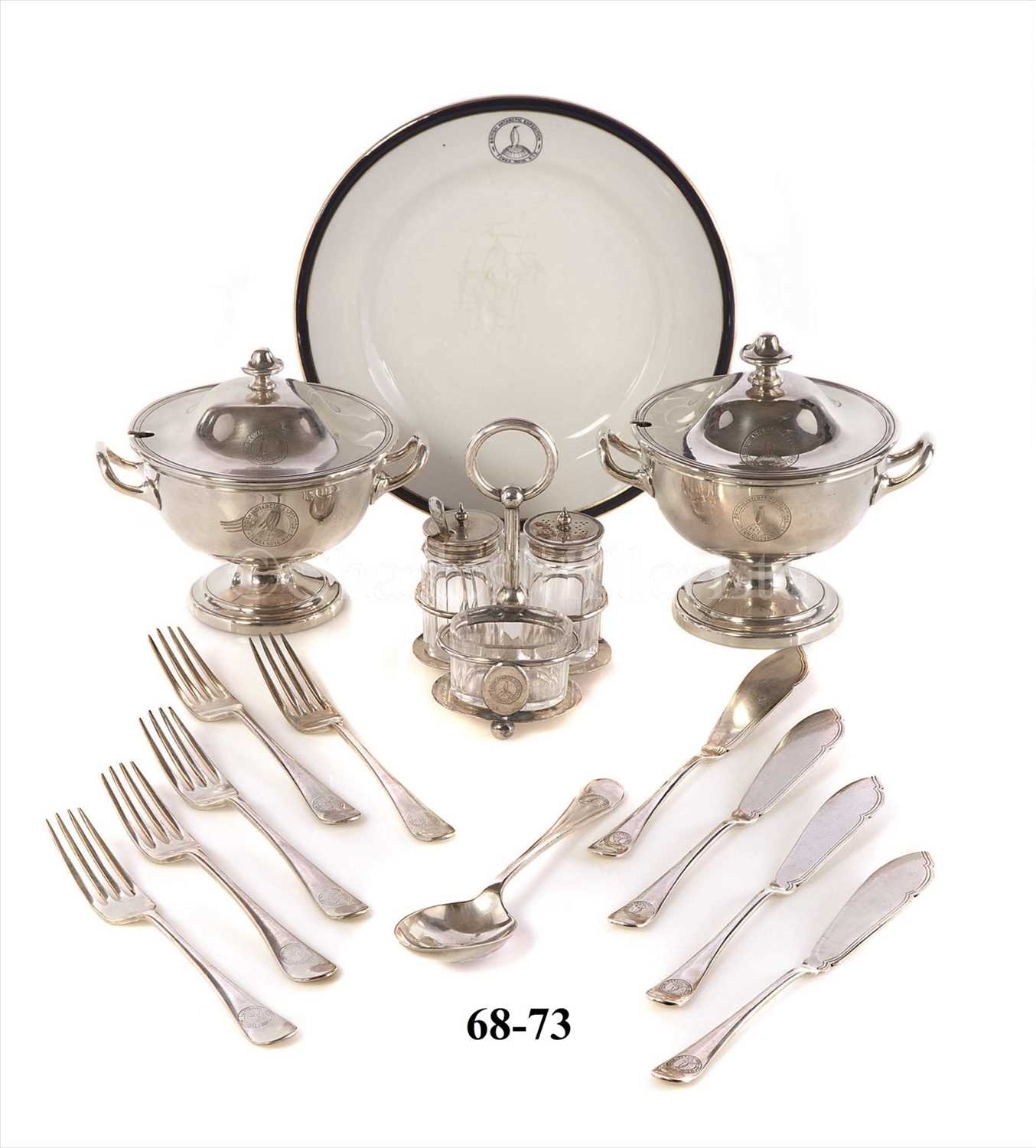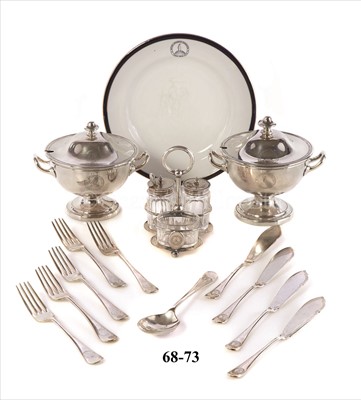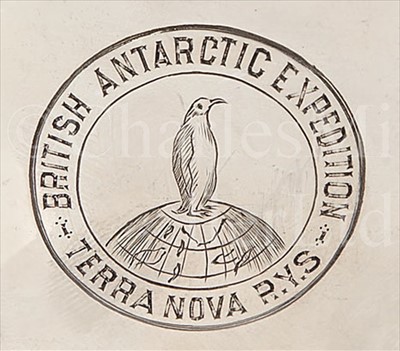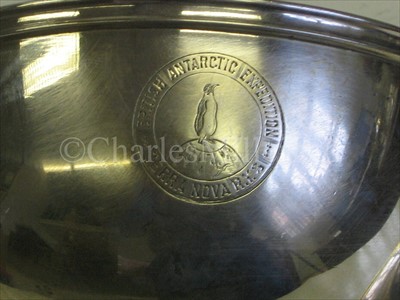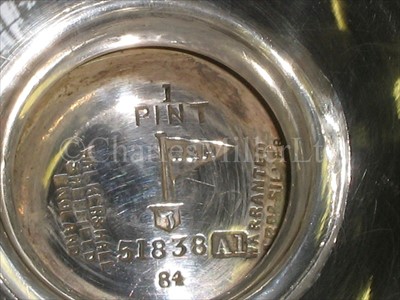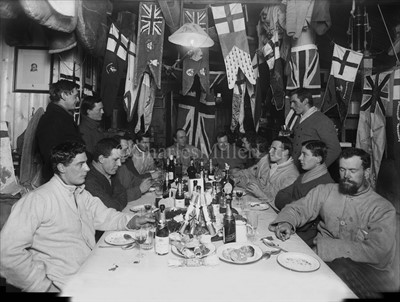28th Apr, 2010 12:00
Maritime and Scientific Models, Instruments & Art (Undaunted)
68
[M] The following six lots were formerly owned by...
The R.Y.S. Terra Nova was built for the Dundee whaling and sealing fleet. Named from the Latin name for Newfoundland, she was ideally suited to the polar regions. Her first work in the cause of science was as a relief ship for the Jackson-Harmsworth Arctic Expedition of 1894-97. In 1903, she sailed in company with fellow Dundee whaler Morning (see previous sale, lot 237) to assist in freeing from McMurdo Sound the National Antarctic Expedition's Discovery, under Commander Robert Falcon Scott. In 1909, she was purchased from Messrs. C.T. Bowring and Company for the British Antarctic Expedition, known also as the 'Terra Nova Expedition'. Reinforced from bow to stern with seven feet of oak to protect against the Antarctic ice pack, she sailed from England in June 1910 under overall command of now Captain Scott, who described her as a wonderfully fine ice ship... As she bumped the floes with mighty shocks, crushing and grinding a way through some, twisting and turning to avoid others, she seemed like a living thing fighting a great fight. Although the twenty-four officers and scientific staff made valuable observations in biology, geology, glaciology, meteorology, and geophysics along the coast of Victoria Land and on the Ross Ice Shelf, Scott's last expedition is best remembered for the death of Scott and four companions. After wintering at Cape Evans, on Ross Island, Scott, Henry Robertson Owers, Edgar Evans, Lawrence Edward Grace Oates, and Edward Adrian Wilson set out on a race to be the first men at the South Pole. Starting with tractors and Mongolian ponies, the final 800 miles had to be covered by man-hauling alone. Reaching the South Pole on 17 January, 1912, they found that Roald Amundsen's expedition (based on the Fram) had beaten them by thirty-three days. Worse was to come, as all five men died on the return journey. Spurred by national pride, Edwardian propagandists romanticized the expedition and made Scott a hero. As Amundsen's success clearly showed, however, his planning and logistics were inadequate and the loss of the explorers avoidable. After returning from the Antarctic in 1913, Terra Nova was purchased by her former owners and resumed work in the Newfoundland seal fishery. Her end came on 13 September, 1943, when she foundered off Greenland; her crew were saved by a U.S. Coast Guard cutter.
BRITISH ANTARCTIC EXPEDITION, 1910-1913: A RARE ELECTROPLATED TWO-HANDLED ONE PINT SAUCE TUREEN AND COVER FROM THE TERRA NOVA
both components engraved with the expedition crest, the tureen with maker's marks for Walker & Hall, Sheffield -- 6½ x 7in. (16.5 x 18cm.)
Sold for £4,712
Estimated at £2,500 - £4,000
(inc. buyer's premium of 24%)
Condition Report
Both components have evidence of being cleaned with a soft scourer leaving shallow polishing marks over exterior, although silver is still in good condition.
We are pleased to provide you with a general report of the condition of this property. Since we are not professional conservators or restorers, we urge you to consult with a restorer or conservator of your choice who will be better able to provide a detailed, professional report. Prospective buyers should inspect each lot to satisfy themselves as to condition and must understand that any statement made by Charles Miller Ltd is merely a subjective, qualified opinion. Prospective buyers should also refer to any Important Notices regarding this sale, which are printed in the Sale Catalogue. NOTWITHSTANDING THIS REPORT OR ANY DISCUSSIONS CONCERNING A LOT, ALL LOTS ARE OFFERED AND SOLD “AS IS” IN ACCORDANCE WITH THE CONDITIONS OF BUSINESS PRINTED IN THE SALE CATALOGUE.
The R.Y.S. Terra Nova was built for the Dundee whaling and sealing fleet. Named from the Latin name for Newfoundland, she was ideally suited to the polar regions. Her first work in the cause of science was as a relief ship for the Jackson-Harmsworth Arctic Expedition of 1894-97. In 1903, she sailed in company with fellow Dundee whaler Morning (see previous sale, lot 237) to assist in freeing from McMurdo Sound the National Antarctic Expedition's Discovery, under Commander Robert Falcon Scott. In 1909, she was purchased from Messrs. C.T. Bowring and Company for the British Antarctic Expedition, known also as the 'Terra Nova Expedition'. Reinforced from bow to stern with seven feet of oak to protect against the Antarctic ice pack, she sailed from England in June 1910 under overall command of now Captain Scott, who described her as a wonderfully fine ice ship... As she bumped the floes with mighty shocks, crushing and grinding a way through some, twisting and turning to avoid others, she seemed like a living thing fighting a great fight. Although the twenty-four officers and scientific staff made valuable observations in biology, geology, glaciology, meteorology, and geophysics along the coast of Victoria Land and on the Ross Ice Shelf, Scott's last expedition is best remembered for the death of Scott and four companions. After wintering at Cape Evans, on Ross Island, Scott, Henry Robertson Owers, Edgar Evans, Lawrence Edward Grace Oates, and Edward Adrian Wilson set out on a race to be the first men at the South Pole. Starting with tractors and Mongolian ponies, the final 800 miles had to be covered by man-hauling alone. Reaching the South Pole on 17 January, 1912, they found that Roald Amundsen's expedition (based on the Fram) had beaten them by thirty-three days. Worse was to come, as all five men died on the return journey. Spurred by national pride, Edwardian propagandists romanticized the expedition and made Scott a hero. As Amundsen's success clearly showed, however, his planning and logistics were inadequate and the loss of the explorers avoidable. After returning from the Antarctic in 1913, Terra Nova was purchased by her former owners and resumed work in the Newfoundland seal fishery. Her end came on 13 September, 1943, when she foundered off Greenland; her crew were saved by a U.S. Coast Guard cutter.
BRITISH ANTARCTIC EXPEDITION, 1910-1913: A RARE ELECTROPLATED TWO-HANDLED ONE PINT SAUCE TUREEN AND COVER FROM THE TERRA NOVA
both components engraved with the expedition crest, the tureen with maker's marks for Walker & Hall, Sheffield -- 6½ x 7in. (16.5 x 18cm.)
Auction: Maritime and Scientific Models, Instruments & Art (Undaunted), 28th Apr, 2010
